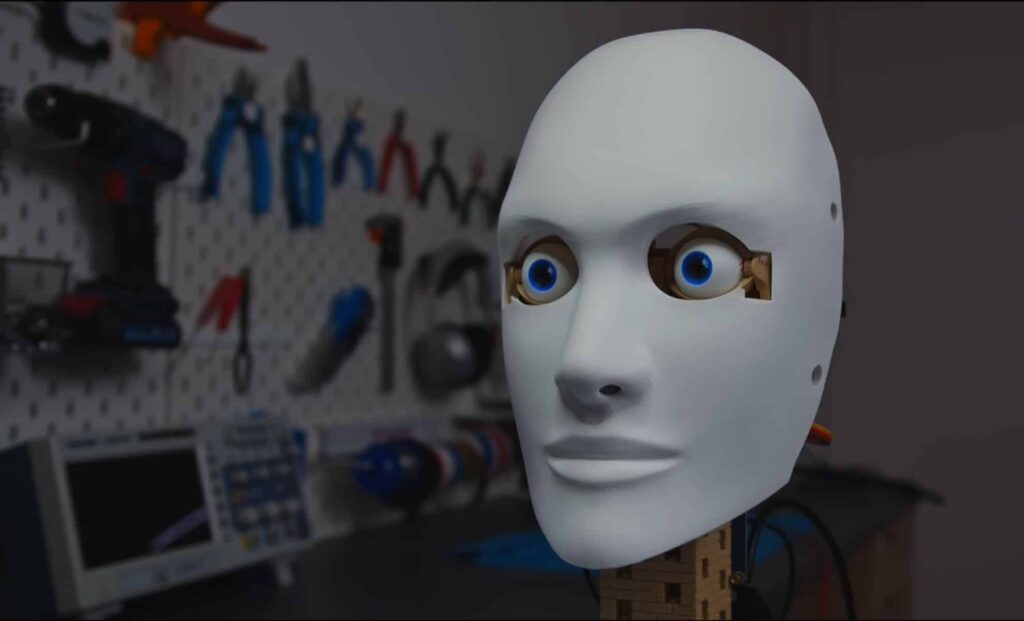Inspired by Steve Jobs’ famous quote about embedding Aristotle in a computer, Bartnik set out to create a self-contained robot that runs independently from cloud services. The robot’s lifelike features, from its animated eyes to its synthesized voice, combine cutting-edge technology with philosophical inquiry. The project not only showcases technical ingenuity but also raises intriguing questions about AI’s potential to emulate historical figures and engage in deep intellectual conversations.
Aristotle’s Digital Doppelgänger
Bartnik’s vision for the robot was to build a system that didn’t rely on cloud computing, a decision motivated by both cost and the desire for greater independence. According to Bartnik, he wanted to see if it was possible to fuse a voice, face, and brain into one device, and run everything on his own hardware. He began by sourcing a pre-made 3D mask and modifying it for his needs, using a thin design that kept internal components hidden. For the eyes, he used a design by Will Cogley, which involved six motors that allowed the bot’s eyes to follow whoever was speaking, creating a natural, lifelike movement.
The audio input, captured by a microphone connected to a Raspberry Pi, is sent via Wi-Fi to Bartnik’s computer, where it is processed by an open-source AI model, Google’s ‘Gemman 3.’ The robot’s responses are then generated in real-time, synthesizing a voice through ElevenLabs’ software. Bartnik also added a ring of programmable LEDs behind the mask to simulate the robot’s mouth movements, enhancing the illusion of a speaking, thinking entity.
Combining Philosophy and Technology
The robot’s unique capability lies in its ability to respond to questions using the logical frameworks of Greek philosophy. When asked a question, the robot will answer with reasoned arguments that echo the style of Aristotle, all processed through Bartnik’s locally-run machine. The AI model’s responses range from insightful philosophical discourse to more humorous, light-hearted exchanges. According to reports, Bartnik even programmed the bot to shift personalities, offering everything from scholarly lectures on virtue to snarky, grumpy remarks.
Bartnik’s decision to run the system locally gives the robot a wide range of flexibility, enabling it to answer any question without the limitations or costs associated with cloud-based services. He emphasized that this approach not only made the robot more cost-effective but also more robust in its ability to respond to an array of topics, philosophical or otherwise.

Open-Source Philosophy: A DIY Project for Enthusiasts
While the bot’s hardware retains a DIY aesthetic, with exposed wires, breadboards, and LEGO components, the result is an interactive, philosophical experience that could hold anyone’s attention for hours. As Bartnik shared all the files and scripts for the robot on GitHub, it has become an open-source project that anyone with a 3D printer and some basic computing equipment can replicate. According to Bartnik, the project was a combination of experimentation and passion, with him constantly tweaking the code and hardware to get everything working seamlessly.
For robotics enthusiasts, the opportunity to build a digital philosopher is a chance to engage with both the technical and intellectual aspects of Bartnik’s creation. The open-source nature of the project allows users to explore the creation process and perhaps even modify the robot’s responses or features according to their own interests. Whether as a tool for philosophical reflection or a quirky party trick, Bartnik’s Aristotle head offers an intriguing look at how AI can intersect with human history and thought.

